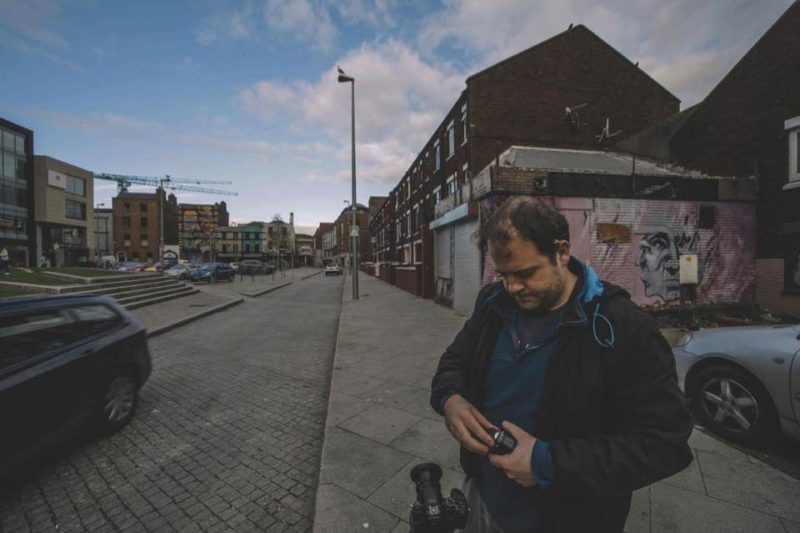
When the recession hit some 10 years ago, Conor Tobin, like many others, was down in the dumps. Behind him, he had a master’s degree in journalism (a career he didn’t want) and was working an unsatisfying job in a stockroom at a time when job prospects were bleak.
Tobin, seeking some kind of creative outlet, signed up to do a 10-week course in FilmBase. He describes those weeks as “eye-opening because it was practical, it was making films rather than talking about them.”
From there Tobin joined KinoD, a film club that was once a hub of creativity where people pitched their ideas to assemble a crew. “It was sort of like my film school”, Tobin says, “where people started to ask me to shoot their stuff. So I became both a cameraman and a director”.
Since then, Tobin has gone on to shoot and direct multiple short films. “I like to be excited by what I’m doing”, he explains, “and not to have a clear, 100 per cent idea of where it’s going. I always try to push myself and to create something that I haven’t seen”. Tobin’s work reflects his ambition. In “Light” we see a tramp wander the desolate, grey streets of Dublin; in “Children of Dawn” (which he directed alongside Tommy Creagh) we see the Children of Lir myth reversed; and in “The End” we see two soon-to-lovers united by a dream, or nightmare, which they seem to share.
Watching them, I felt they were united by the common themes of loneliness and longing. Tobin is initially reluctant to agree, but after considering the thought he says: “Yeah, it’s definitely there.”
I think of all great art that [it’s about] the moment when style and content become one and the same
This apprehension speaks to the sense that Tobin’s work favours atmosphere, moving based on the intuitions of mood rather than the propellers of plot. “I want my films to be a visual and visceral experience”, he says. “I think of all great art that [it’s about] the moment when style and content become one and the same. When you have an atmosphere that’s not just complementary to the story but you couldn’t imagine the film having anything else – that’s when you have a great film.”
Pulling back from what makes a great film to a great idea is, in Tobin’s mind, something that is “authentic” and “comes from the heart”. He feels that too many modern-day short filmmakers craft their films around “hot-button issues”. While “some of that is understandable”, he says that it’s often with an eye to what they think festivals want rather than what the filmmakers want.
For Tobin, “it doesn’t really help to create a unique kind of industry”. He says that more “money will come to Ireland when we have something called Irish cinema when we get a buzz and a feeling to our films like what we have with Irish literature”.
I also lived through the end of the Celtic Tiger, and I think such naivety might have been part of the problem
The influence of Irish literature upon his work is clear to see. “Children of Dawn” begins and ends with voice over lifted from a George Æ Russell poem and “Light”, with its tramp figure wandering Dublin’s streets, is difficult to imagine existing without Beckett. His films draw on mythology and literature and incorporate a strong sense of place. Something like “The End” is, at times, horrified by what Dublin is becoming while “Light” casts a cool, investigative eye over what Dublin is, with the way Tobin’s camera lingers upon the lifeless statues of Dublin’s heroes and heroines, from Molly Malone to Jim Larkin.
Tobin feels that we are living in “doom-laden” times, and such a sense of gloom inflects and infects his work. “It’s interesting to see people clinging to terrible ideas from the past”, Tobin says as we talk about Brexit. Something happened a decade or so ago, Tobin feels, and things became noticeably different: “I lived through the Celtic Tiger, which had a sense of optimism to it, a sense that the old problems were over. But I also lived through the end of that and I think such naivety might have been part of the problem.” He feels that “things seem to be falling apart” and his art, like much recent art, is struggling to come to terms with the dying of the old and the burgeoning of the new.






